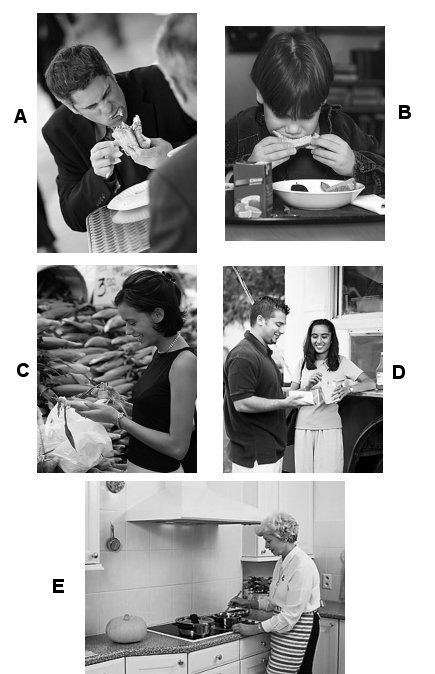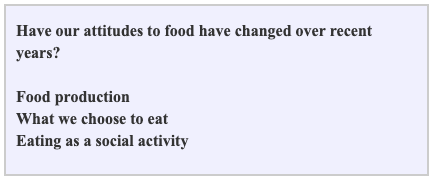CPE Speaking Overview
If you’re studying for the Cambridge C2 Proficiency (Formally known as Certificate of Proficiency in English or CPE), welcome to our guide to the Speaking test. Here’s an overview of the oral paper (Paper 4) and advice to help you as you get ready for the interview.
Mục Lục
CPE Speaking Test: Key Facts
Duration: 19 minutes (28 minutes for groups of three at centres where there’s an odd number of candidates).
Participants: Candidates are interviewed in pairs. There are two examiners present: one who asks the questions, the other acts as assessor and doesn’t speak during the interview.
Format: The oral test consists of three parts.
Part 1 (Interview)
Tests ability to: use language for social purposes, such as in making introductions, answering questions, giving an opinion.
This first section of the CPE Speaking exam lasts about 3 minutes (4 minutes for groups of three). In this section the examiner will ask you at least three questions to give you the chance to introduce yourself and for you to give an opinion on a general topic to do with your life experiences, interests etc.
Example Questions
The interview will begin with the examiner saying something like:
Q: Hello. My name is …….. and this is my colleague ……..
Q: And your names are?
Q: Can I have your mark sheets please? …….. Thank you.
Q: First of all we’d like to know something about you.
(Source: CPE Handbook: www.cambridgeesol.org)
The examiner will then ask each of you a minimum of three questions. For example:
Q: Which place would you recommend a visitor to your country see?
Q: How important is it to speak English in your country?
Q: Do you think young people spend their leisure time usefully?
Tips!
You may well be asked questions that could be answered with a brief response. However, try to give full, relevant answers to these questions.
1) Offer more than the bare minimum in your answers.
Q: Which place would you recommend a visitor to your country visit?
A: If someone comes to the Czech Republic they’ll obviously want to spend time in the capital, Prague but I’d also recommend visiting Brno. (Don’t stop there!) It’s in the heart of Moravia and it’s full of cultural places of interest. There’s a city centre and an old part of the town and they’re both full of lovely cathedrals, museums and much more.
Q: Do you think young people spend too much time using technology?
A: Not really, no. It’s true that people often say young people are always sitting in front of a computer screen or texting on their mobile phones. But that’s how life is now, isn’t it? Anyway, I have many friends who play lots of sport so it’s wrong to generalise.
2) Offer examples to help you explain a statement.
Q: How important is it to speak English in your country?
A: Speaking English is very important. Children learn it from an early age and many jobs require you to have an English qualification or want evidence that you can communicate in English well. It’s not just English though. In my company for example, for business reasons German is also very important.
Part 2: (Collaborative Task)
Tests ability to: use language to discuss and interpret, to agree, disagree or agree to disagree, negotiate and collaborate, to rank or classify, speculate, evaluate, make decisions etc.
There are two sections to Part 2 of the CPE Speaking test, which lasts about 4 minutes (6 minutes for groups of three). The examiner will ask you and your partner to talk about a set of visual prompts together.
Example Task
The examiner will say something on the lines of:
Q: Now in this part of the test you’re going to do something together. Here are some pictures showing people in different situations.
Q: First, I’d like you to look at pictures A and C and talk together about why these photographs might have been taken. You have about 1 minute for this so don’t worry if I interrupt you.
Then after approximately 1 minute:
Q: Thank you. Now look at all the pictures. I’d like you to imagine the following photographs have been collected together for a campaign to encourage healthy eating. Picture A was one of several pictures used in the campaign the previous year.
Q: Talk together about how each of the other pictures might be used as part of this year’s campaign and choose one for the front cover of the campaign brochure.
Q: You have about 3 minutes to talk about this.

Notice there are TWO instructions. You are asked to talk about all the pictures first but also to reach a decision as to which one picture should be used for the campaign. This means you’re required not only to discuss but also to show your ability to negotiate and collaborate with your partner. You don’t have to reach agreement but you must at least work towards this.
Tips!
The discussion will proceed more productively if you work collaboratively on this task.
1. Ask your partner for his or her opinion rather than simply stating your own. Focus just as much on asking some ‘What do you think …’ type questions rather than simply making ‘I think …’ type statements.
2. When your partner is speaking listen carefully and ‘actively’. Show interest in their opinions by responding to comments he or she makes. This might be by showing you agree or disagree with something they’ve said but could also be to ask them to expand or clarify a comment they’ve made. For example:
‘That’s an interesting point.’
‘So, when you say …….., do you mean ……..?’
‘Could you explain what you mean by …….?.’
3. When giving your opinion, accommodate your partner’s views when appropriate. For example, depending upon whether you agree or disagree with something you could say:
‘You were saying …’
‘You mentioned …’
‘That’s a good point.’
‘You’ve got a point there.’
‘You’re absolutely correct.’
‘Precisely!’
‘I see what you mean but …’
‘I see what you’re getting at but …’
‘But don’t you think …’
Part 3 (Long Turn and Discussion)
Tests ability to: speak at length coherently, use language to develop a topic, describe, compare and contrast, hypothesise and comment.
Part 3 of the CPE Speaking test lasts about 12 minutes including 2 minutes for each long turn and 4 minutes for the final discussion. Candidate A is passed a card and has to speak about the topic without interruption, either from the examiner or their partner. When Candidate A has finished the examiner asks Candidate B a brief question about the topic. The roles are then reversed: Candidate B is given a different card and speaks for 2 minutes followed by Candidate A who answers a brief question about the topic. At the end of the long turns both candidates participate in a discussion with the examiner about the theme of the two topics.
Example Task
At this stage of the interview the examiner will say something on the lines of:
Q: Now in this part of the test you’re each going to talk on your own for about 2 minutes. You need to listen while your partner is speaking because you’ll be asked to comment afterwards.
Q: (Candidate A) I’m going to give you a card with a question written on it and I’d like you to tell us what you think. There are also some ideas on the card for you to use if you like.
Q: All right? Here is your card. Please let (Candidate B) see your card. Remember (Candidate A) you have about 2 minutes to talk before we join in.
(Source: CPE Handbook: www.cambridgeesol.org)
Example (Candidate A Card)

Example (Candidate B Card)

At the end of each long turn the examiner will ask the other candidate a question such as: ‘What do you think?‘ or ‘Is there anything you would like to add?‘
Following this, the examiner will start the discussion stage and say something like:
Q: Now to finish the test we’re going to talk about ‘attitudes’ in general.
Q: Is it usually simple to change people’s attitudes?
Q: How are people’s attitudes often formed?
Q: Do different generations find it easier to change their opinions about issues?
Q: Do you find it difficult to change your attitude towards something?
Tips!
1. You will only be given a few seconds to collect your thoughts before being asked to make your long turn so you won’t be able to plan your talk in detail. However, you will be able to structure it loosely around an introduction, main body and conclusion. Start by making the topic significant by relating it to a topical news story or with reference to an important event in your life. For example:
Card A
‘Hardly a day goes by when we don’t hear stories about how unhealthy our diets are these days …’
‘This is a really interesting topic and one that I can relate to …. ‘
Card B
‘This is an interesting question. Probably the most influential experience in my life and one that changed my attitude towards other nationalities was when I spent time travelling …’
2. Signpost your talk to help the examiner and your partner follow your train of thought. For example:
‘Take the way we produce food for example …’.
‘Then there’s/Turning to the kind of food we like to buy …’
Signpost the fact that you’re coming to an end with expressions such as ‘So …’, ‘As you can see …’, ‘To sum up ..’.
3. Listen carefully to your partner’s presentation and consider your attitude to one or two of the points made. Then, when the examiner asks for your opinion show you’ve been listening by answering on the lines of:
‘The point (Candidate A) made about … was particularly interesting. In my experience …’
‘(Candidate A) raised some really interesting points. In my view …’
4. During the discussion phase when your opinion is asked for, use expressions to allow yourself time to think. For example:
‘That’s a good question.’
‘Well, let me think …’
‘It’s funny you should ask …’
‘Well, to cut a long story short …’
‘Well, to be honest …’
‘It’s difficult to say …’















![Toni Kroos là ai? [ sự thật về tiểu sử đầy đủ Toni Kroos ]](https://evbn.org/wp-content/uploads/New-Project-6635-1671934592.jpg)


